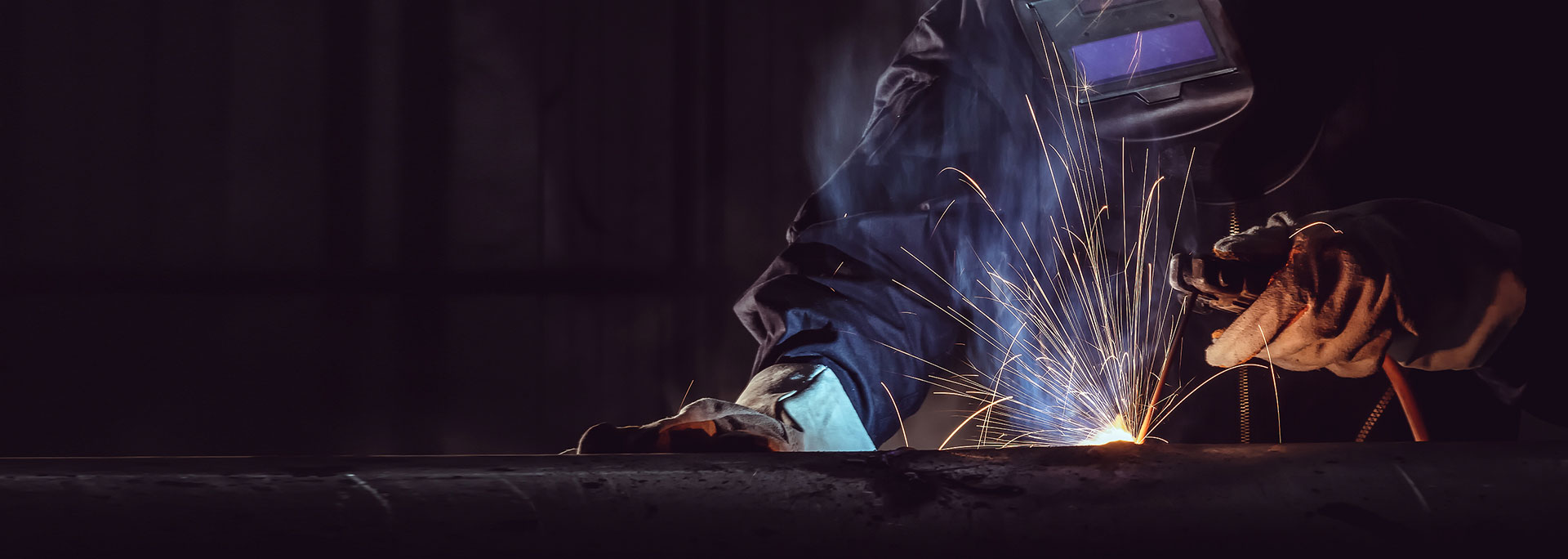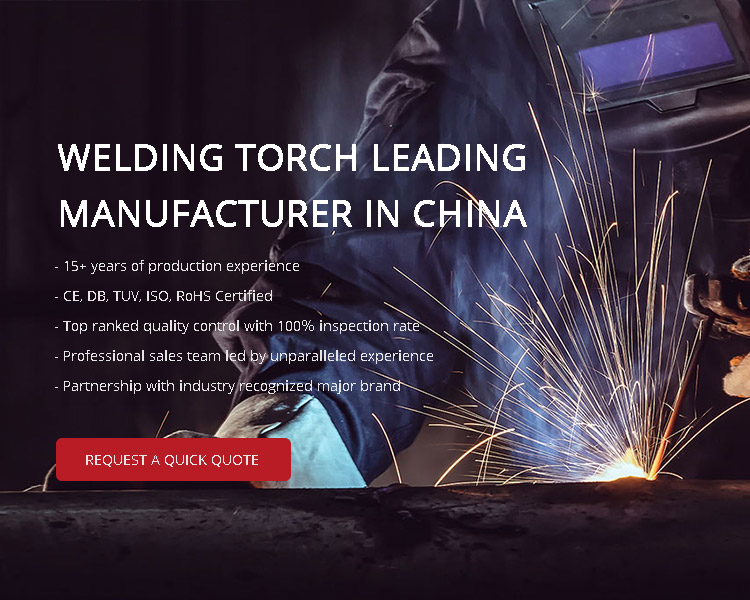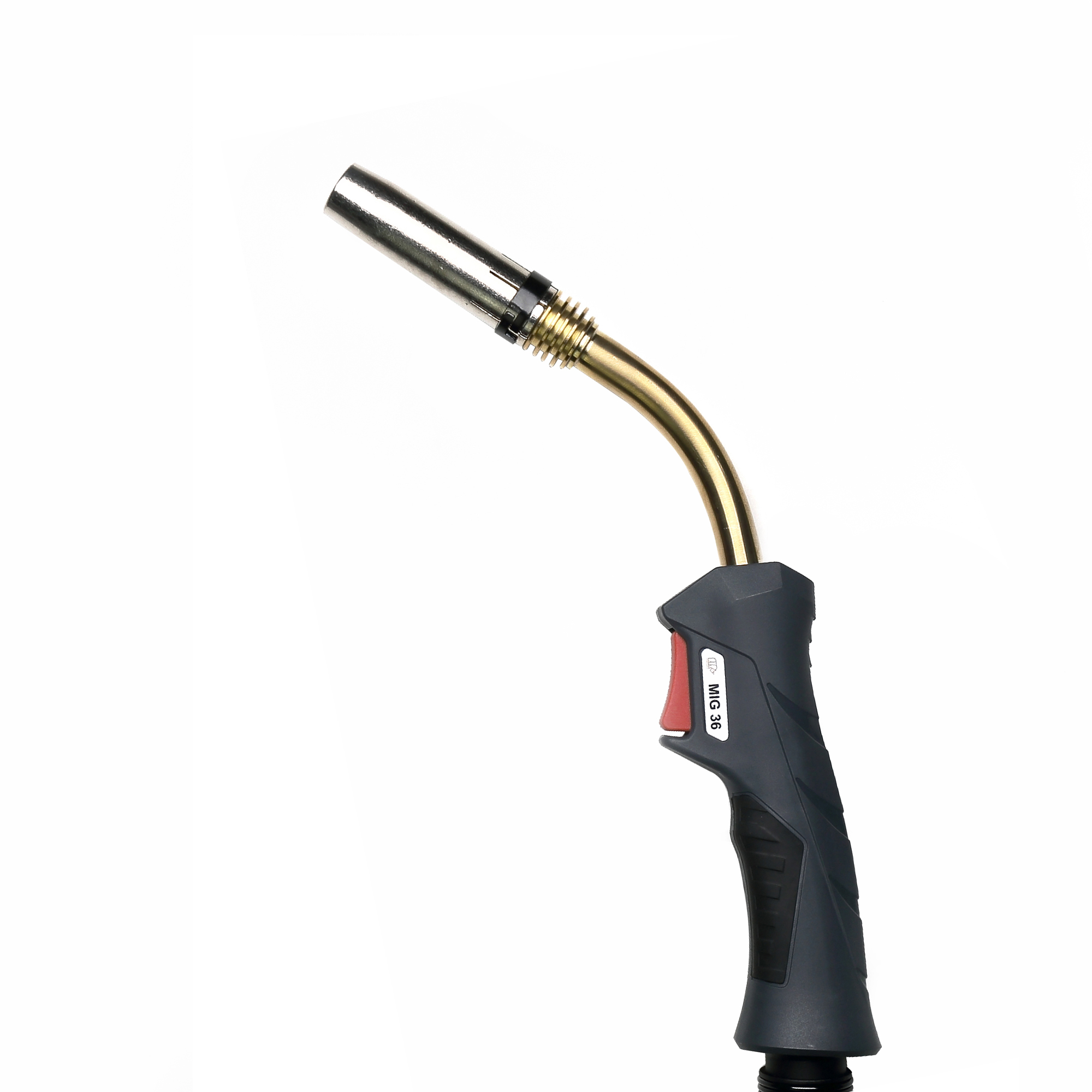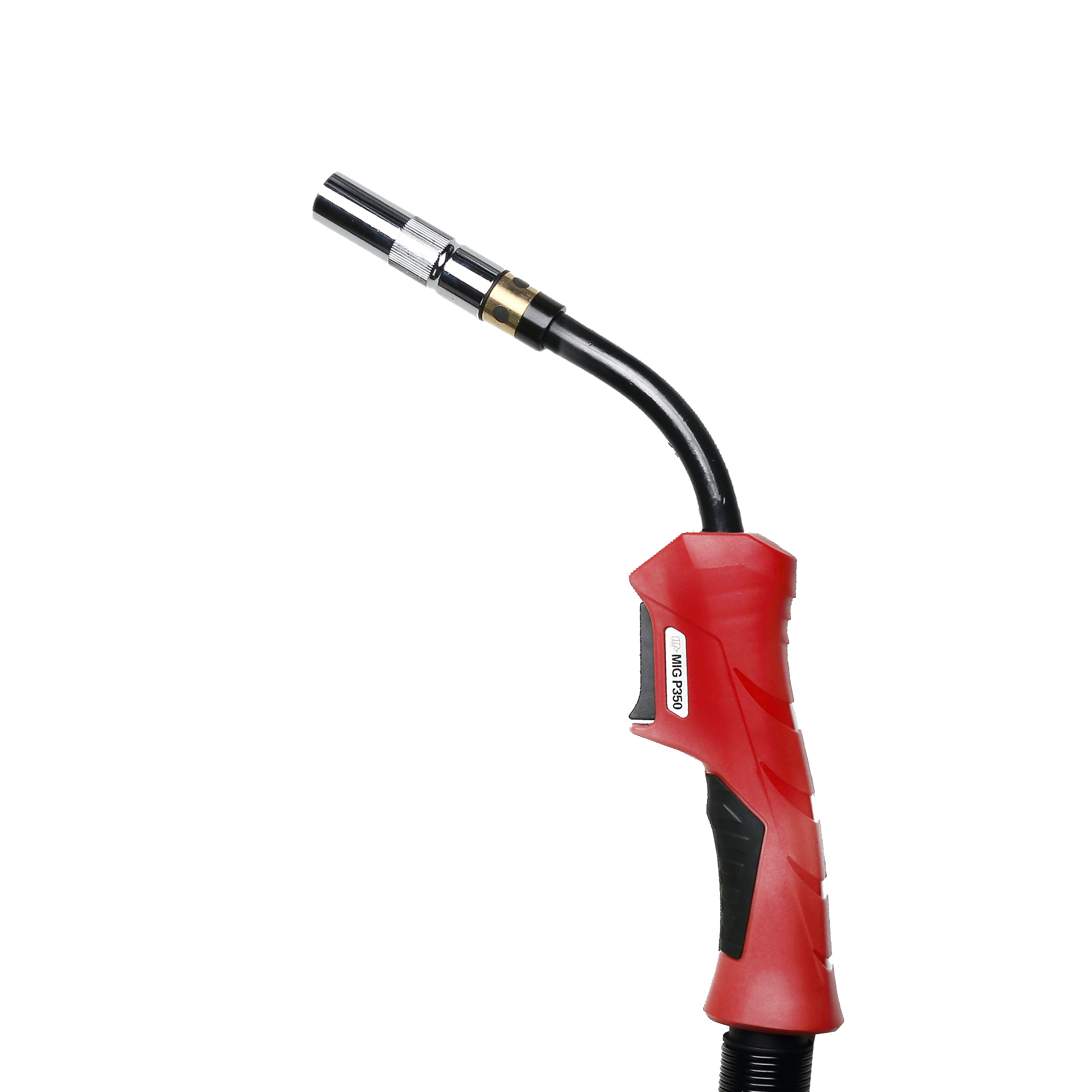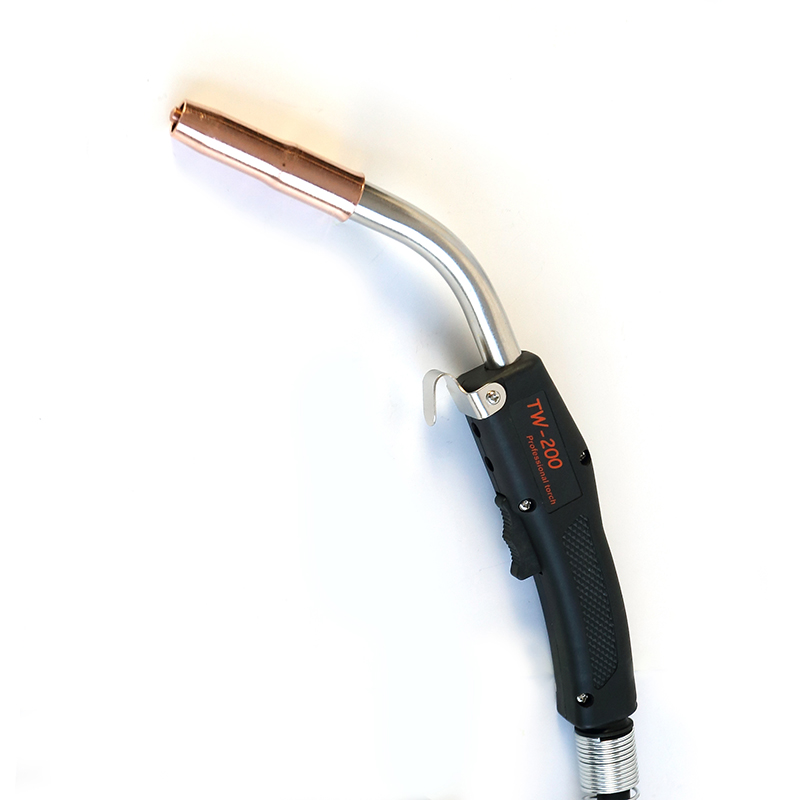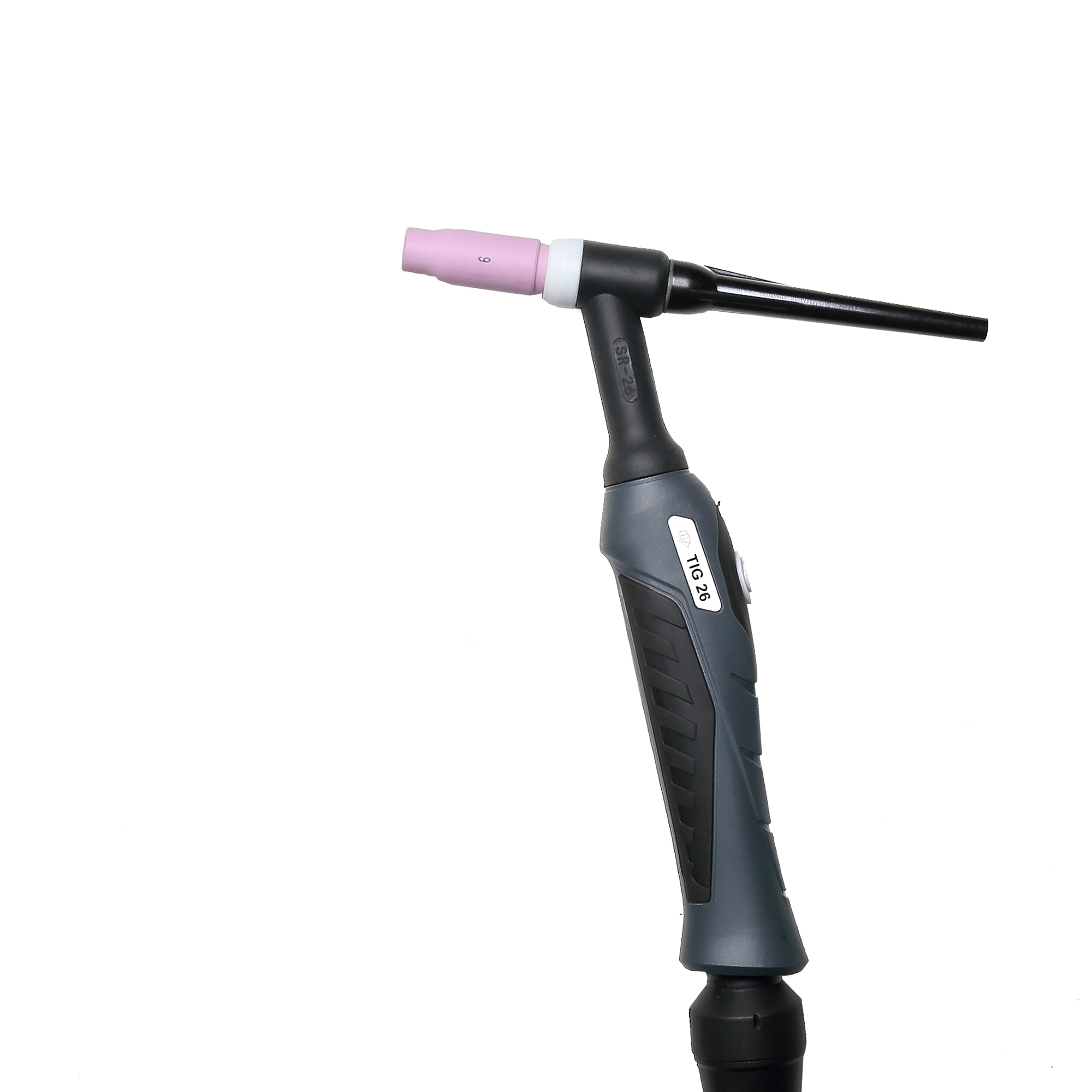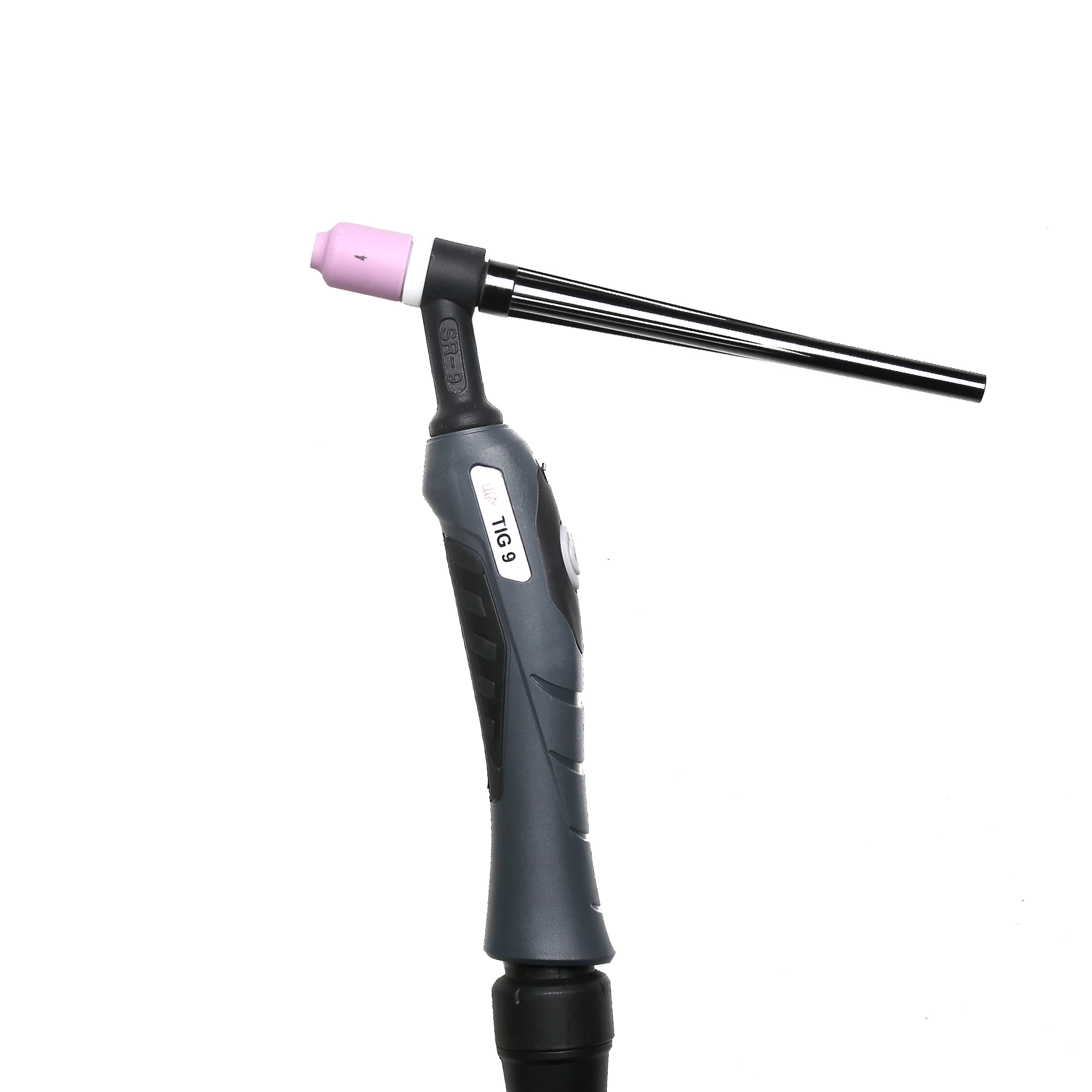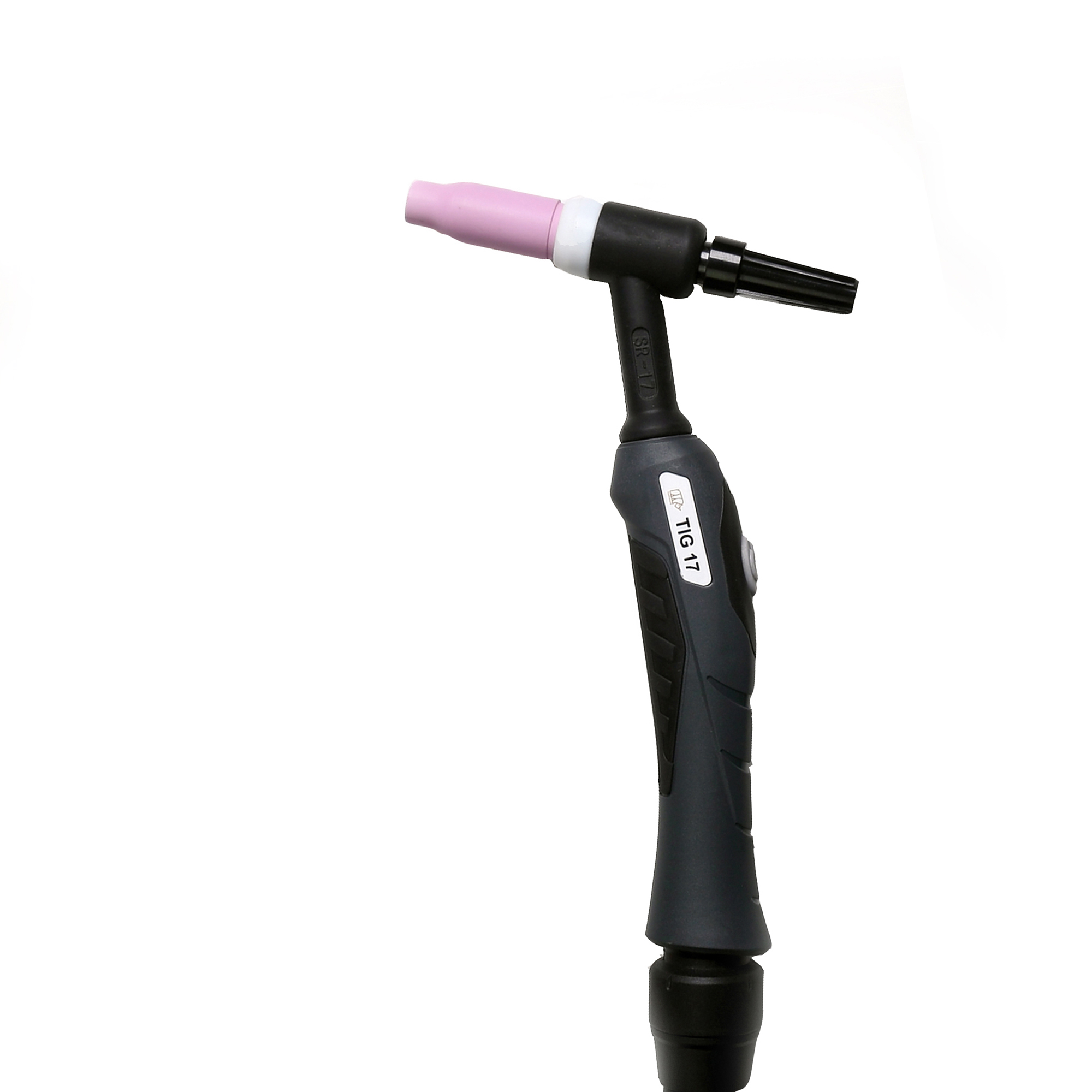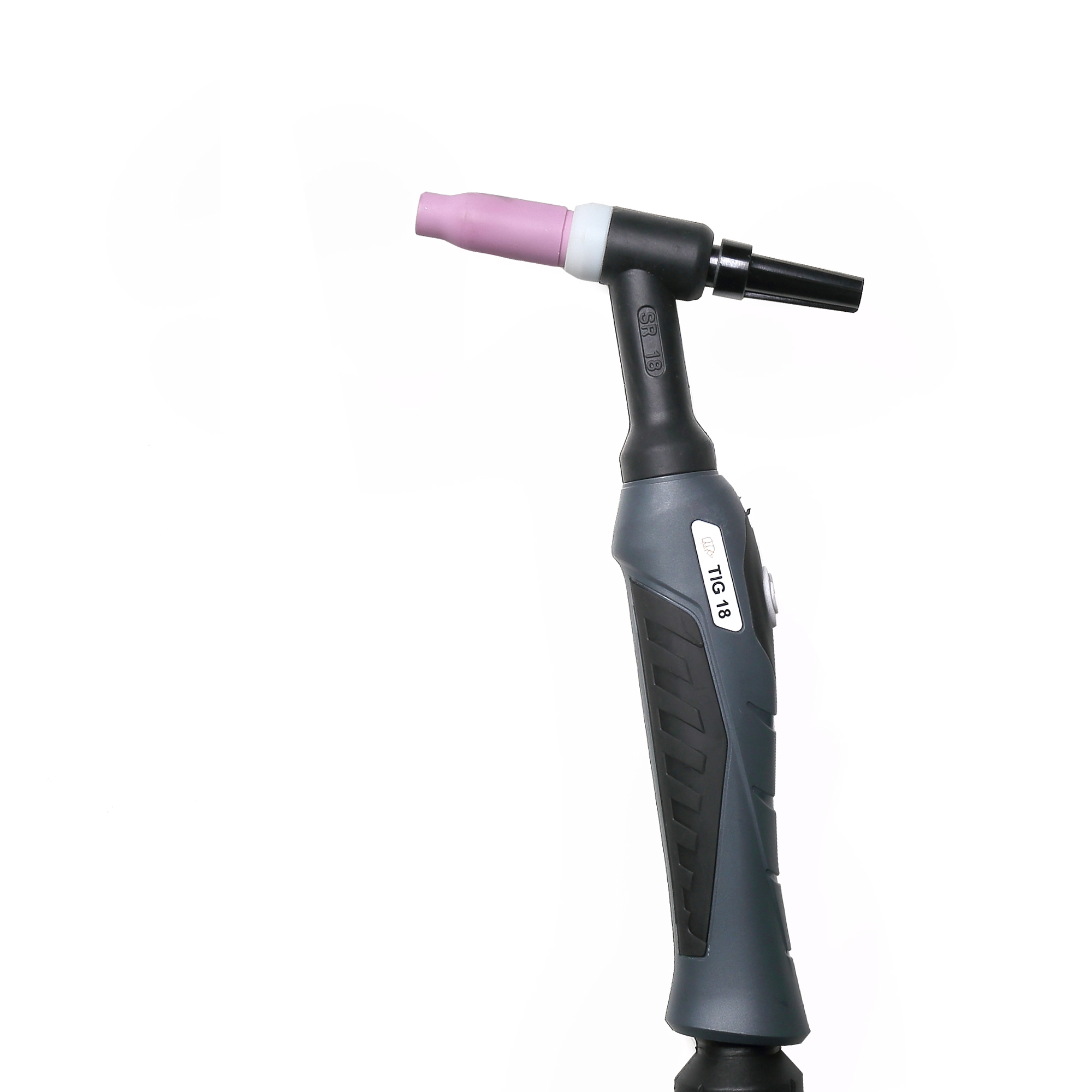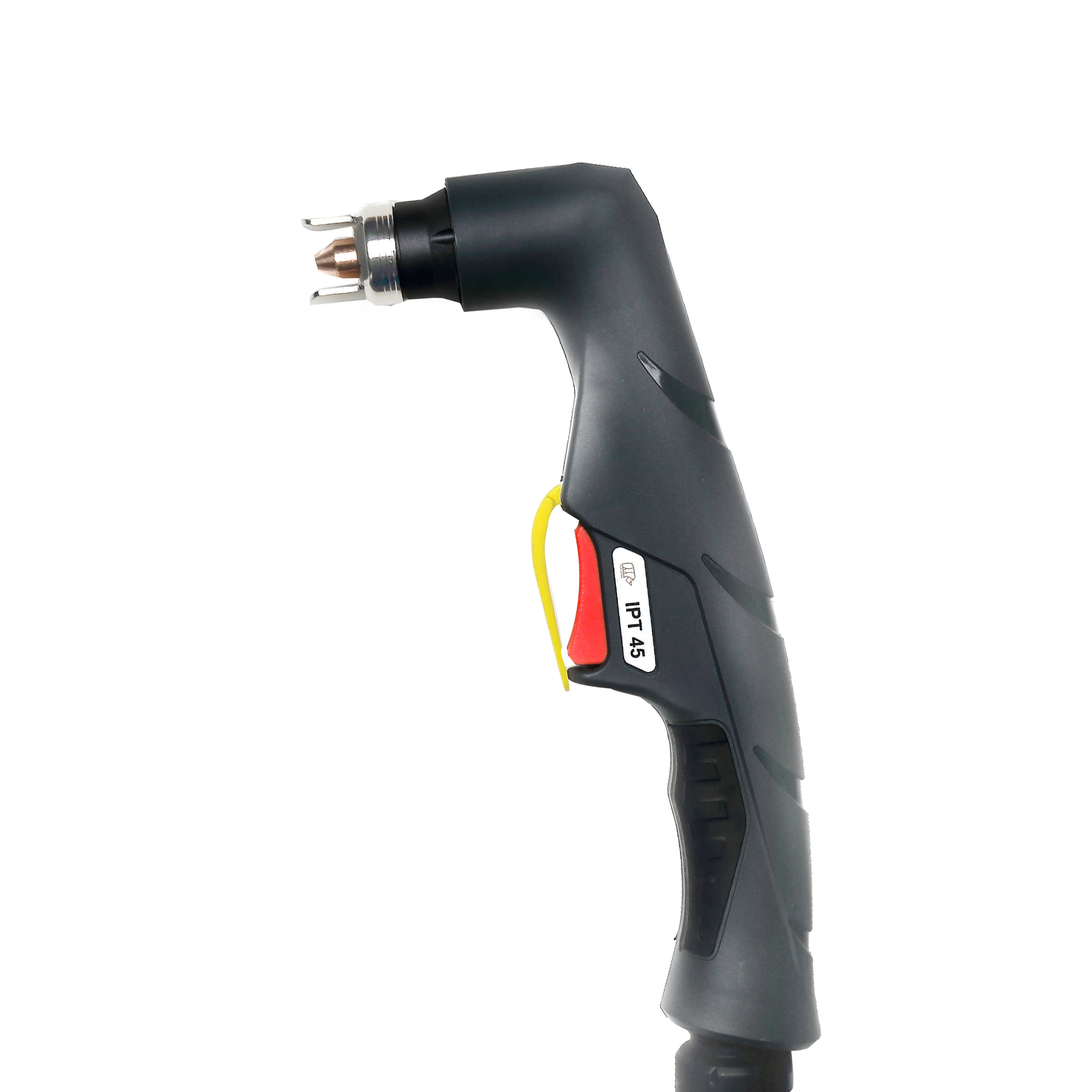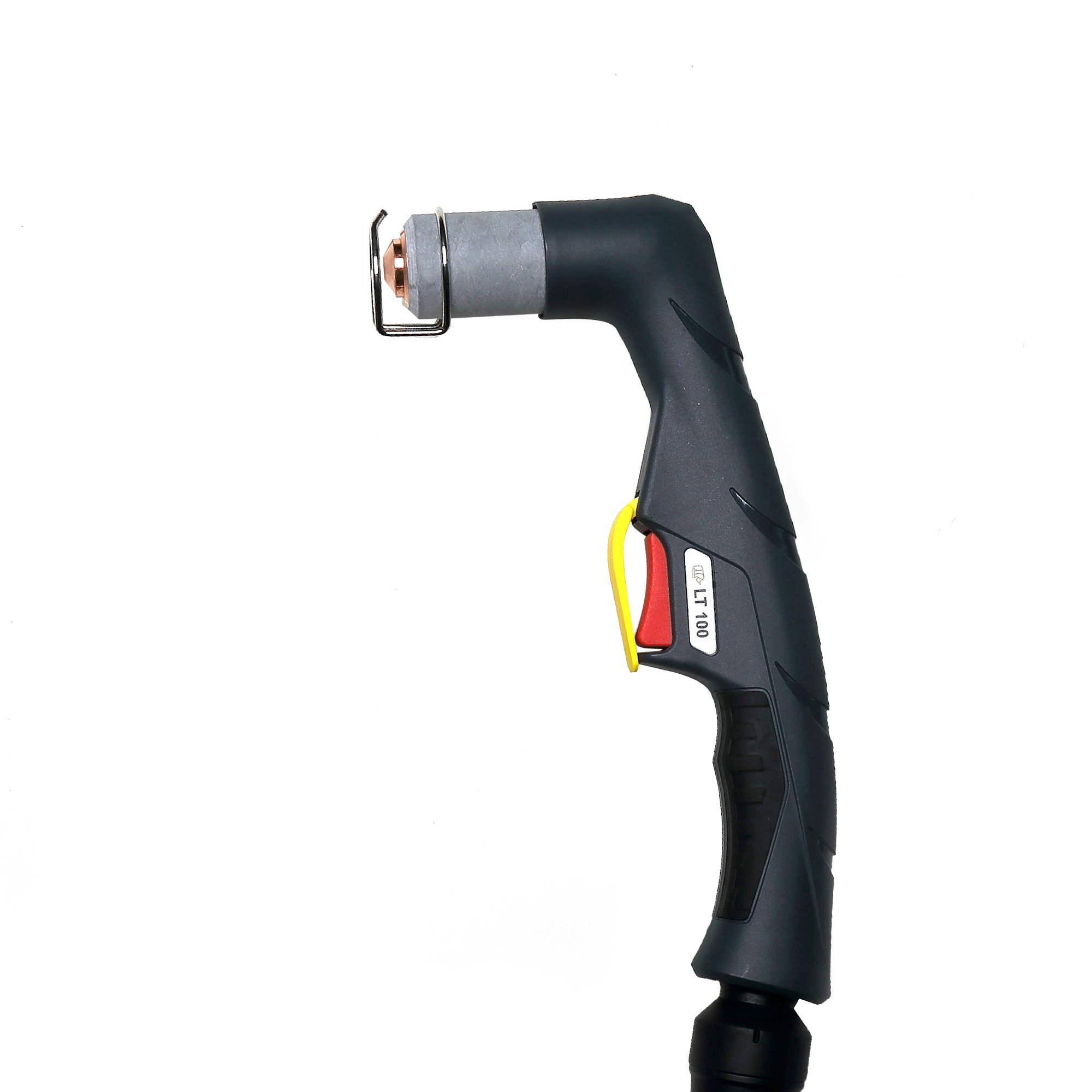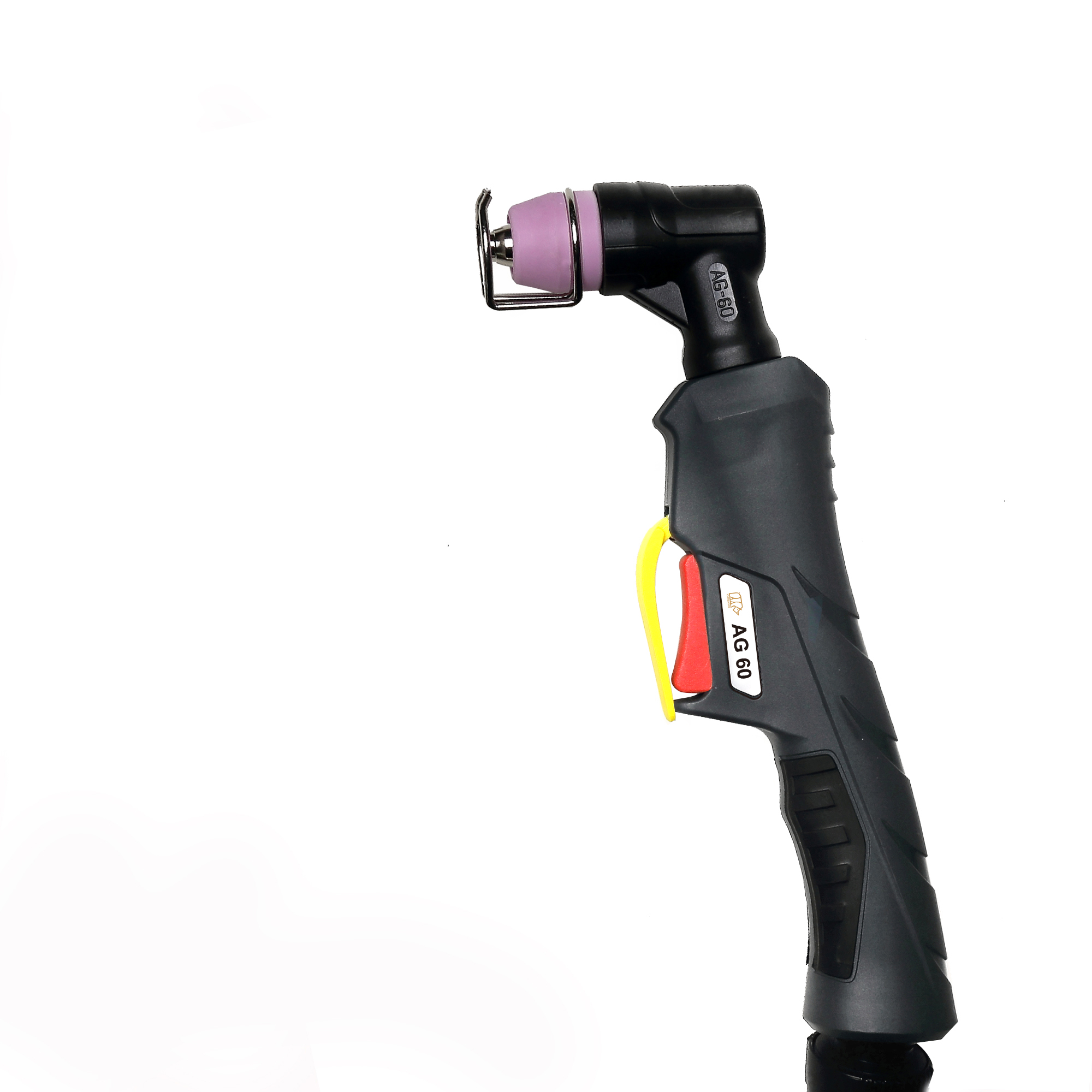1. MIG Welding Gun FAQs
Q: What's the difference between MIG welding and TIG welding?
A: MIG (Metal Inert Gas) uses a wire electrode and shielding gas for fast, high-deposition welding on thick metals (e.g., steel, aluminum). TIG (Tungsten Inert Gas) uses a non-consumable tungsten electrode for precise, clean welds on thinner materials (e.g., stainless steel, copper).
Q: Why does my MIG gun keep clogging with spatter?
A: Excess spatter is often caused by incorrect voltage/wire speed settings, dirty base metal, or low-quality shielding gas. Clean the workpiece, adjust settings, and use argon/CO2 blends for better results.
Q: Can I use a MIG welder without gas?
A: Yes, with flux-core wire (FCAW), which generates its own shielding gas. Ideal for outdoor welding but produces more smoke and spatter.
Q: How to prevent MIG gun liner wear?
A: Avoid kinking the cable, use the correct liner size for your wire, and replace it annually or if feeding becomes inconsistent.
Q: Best MIG gun for automotive repair?
A: Lightweight, 150–200A guns with flexible necks offer maneuverability for sheet metal and frames.
2. TIG Welding Gun FAQs
Q: Why choose TIG over MIG for aluminum welding?
A: TIG provides finer control over heat input, preventing warping on thin aluminum. Use AC mode with 100% argon gas for clean, oxide-free welds.
Q: How to avoid tungsten contamination in TIG welding?
A: Grind tungsten to a sharp point, avoid touching the workpiece, and use a scratch-start or HF (high-frequency) ignition to prevent sticking.
Q: Can I TIG weld without a foot pedal?
A: Yes, use a lift-arc torch with amperage control on the machine, but a pedal allows real-time adjustments for critical joints.
Q: What gas is best for stainless steel TIG welding?
A: Pure argon for most applications. Add 2–5% helium for thicker materials to increase penetration.
Q: Why does my TIG weld look discolored?
A: Oxidation from inadequate gas coverage. Increase argon flow (15–20 CFH), use a gas lens, and minimize torch angle.
3. Plasma Cutter FAQs
Q: Plasma vs. oxy-acetylene cutting: which is better?
A: Plasma cutters excel on conductive metals (steel, aluminum) up to 1.5" thick with faster, cleaner cuts. Oxy-fuel is better for very thick steel (>2") or heating/bending.
Q: How to extend plasma cutter consumable life?
A: Maintain proper air pressure (90–120 PSI), pierce at recommended heights, and avoid dragging the nozzle on the workpiece.
Q: Why does my plasma cutter leave slag/dross?
A: Incorrect amperage, travel speed, or worn consumables. Increase amperage for thicker metal, move faster on thin materials, and replace nozzles regularly.
Q: Can I use a plasma cutter underwater?
A: Yes, underwater cutting reduces heat distortion and fumes. Use a water-injection torch and ensure the machine is rated for submerged operation.
Q: Best plasma cutter for DIY/home use?
A: 30–50A machines handle up to 3/8" steel, are portable, and work on 120V/240V outlets.
4. General Comparison & Safety
Q: MIG vs. TIG vs. Plasma: Which tool do I need?
A: MIG for heavy fabrication/repairs, TIG for precision or exotic metals, and plasma for fast metal cutting. Multi-process machines save cost and space.
Q: Safety tips for welding/cutting beginners?
A: Always wear ANSI-approved PPE (helmet, gloves, jacket), work in ventilated areas, and keep a fire extinguisher nearby. Check for gas leaks regularly.
English
简体中文
العربية
Français
Русский
Español
Português
Deutsch
italiano
日本語
한국어
Nederlands
Tiếng Việt
ไทย
Polski
Türkçe
ភាសាខ្មែរ
Bahasa Melayu
Filipino
Bahasa Indonesia
magyar
Română
Čeština
Монгол
қазақ
Српски
हिन्दी
فارسی
Slovenčina
Slovenščina
Norsk
Svenska
українська
Ελληνικά
Suomi
Latine
Dansk
বাংলা
Hrvatski
Afrikaans
Gaeilge
Eesti keel
नेपाली
Oʻzbekcha
latviešu
Azərbaycan dili
Беларуская мова
Bosanski
Български
ქართული
Lietuvių


